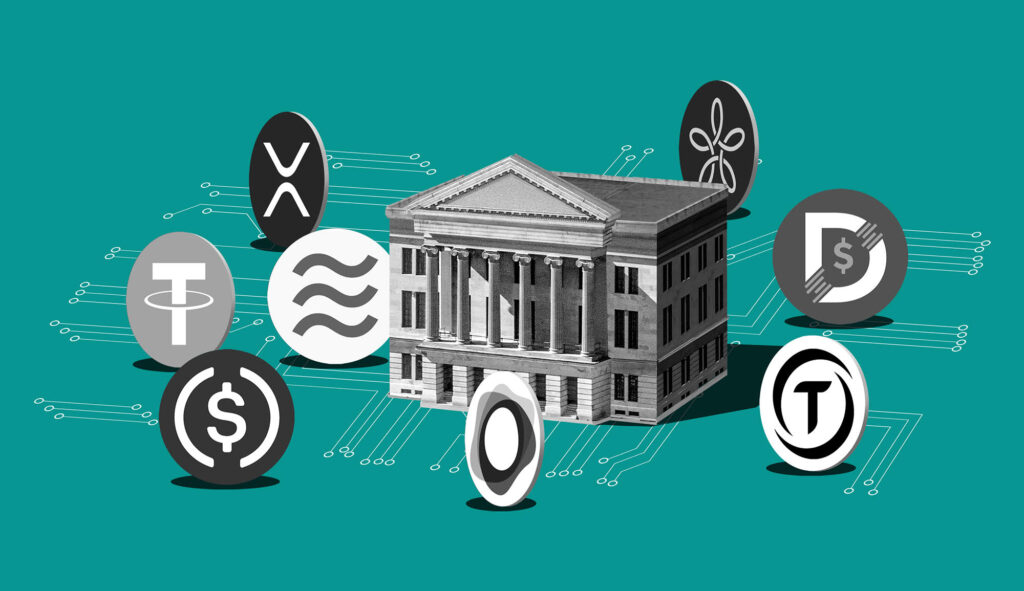
In the ever-evolving landscape of financial markets, stability and trust are paramount. The recent actions of the Federal Reserve have sparked concerns about the potential disruption that competing stablecoin issuers in the short-term financing space might pose. According to JPMorgan, after the Fed’s restricted access to a key facility, these issuers could introduce a significant degree of uncertainty into the market. This article delves deep into the implications of such actions and their potential ramifications for the financial world.
Understanding the Significance
To comprehend the gravity of the situation, it’s crucial to dissect the key elements involved. Firstly, we must address what stablecoins are and their role in the financial ecosystem. Stablecoins are a type of cryptocurrency designed to maintain a stable value, often pegged to a reserve asset like the US dollar. They have gained popularity as a means of facilitating transactions and providing a store of value in the crypto space. However, their stability is contingent on the reserves held to back them.
The Federal Reserve’s Decision
The Federal Reserve, as the central bank of the United States, plays a pivotal role in maintaining the stability of the financial system. According to JPMorgan, after the Fed’s restricted access to a key facility, which facility we’ll explore shortly, there is a growing apprehension about the potential disruptions that could ensue.
The key facility in question is the Federal Reserve’s payment system, which is the backbone of the US financial system. This system facilitates the seamless transfer of funds between financial institutions, ensuring the smooth functioning of various transactions, including those involving stablecoins. The recent restrictions imposed on access to this vital facility have raised eyebrows across the financial sector.
The Role of Stablecoin Issuers
Stablecoin issuers, such as Tether (USDT), USD Coin (USDC), and others, are responsible for creating and managing stablecoins. These digital assets are used for a variety of purposes, including remittances, trading, and as collateral in decentralized finance (DeFi) platforms. Their value stability is maintained through the backing of reserves, typically held in the form of traditional currency or other assets.
According to JPMorgan, after the Fed’s restricted access to a key facility, competing stablecoin issuers may encounter challenges in accessing the necessary liquidity to support their stablecoins. This can potentially lead to a mismatch between the stablecoin supply and the underlying reserves, eroding the confidence of users and investors.
Market Disruption Concerns
The concerns raised by JPMorgan and other financial analysts revolve around the potential disruption of short-term financing markets. Short-term financing plays a crucial role in ensuring the liquidity and functioning of financial markets. It involves the lending and borrowing of funds for short durations, often overnight, to meet immediate funding needs.
Competing stablecoin issuers have become participants in these short-term financing markets by offering their stablecoins as collateral. This practice has gained traction due to the convenience and efficiency of blockchain-based transactions. However, the recent restrictions on access to the Federal Reserve’s payment system could hinder the ability of stablecoin issuers to access liquidity quickly.
A Ripple Effect on Financial Markets
The concerns expressed by JPMorgan and others are not isolated. They echo a broader sentiment within the financial industry about the potential ripple effects of these actions. The interconnected nature of financial markets means that disruptions in one area can quickly spread to others.
If competing stablecoin issuers struggle to maintain the stability of their stablecoins due to restricted access to the Federal Reserve’s payment system, it could lead to a loss of confidence in these digital assets. This, in turn, might trigger a cascading effect, affecting the broader cryptocurrency market and even traditional financial markets.
Regulatory Scrutiny and Oversight
To address these concerns, regulatory bodies and policymakers are closely monitoring the situation. The use of stablecoins and their impact on financial stability have drawn the attention of regulators worldwide. In the United States, discussions are ongoing regarding potential regulations that could govern stablecoin issuers and their operations.
According to JPMorgan, after the Fed’s restricted access to a key facility, regulatory scrutiny is likely to intensify. Regulators are keen on ensuring that stablecoin issuers maintain adequate reserves to back their digital assets and adhere to stringent compliance standards. This increased oversight is seen as a necessary step to mitigate the risks associated with stablecoin market disruptions.
The Way Forward
In a rapidly evolving financial landscape, adaptability and resilience are key. According to JPMorgan, after the Fed’s restricted access to a key facility, competing stablecoin issuers must navigate a complex terrain. They need to demonstrate their ability to maintain the stability and integrity of their stablecoins, even in challenging circumstances.
Moreover, collaboration between the private sector and regulators is essential. Striking a balance between innovation and prudential oversight is a delicate task, but it is vital to ensure the continued growth and sustainability of the digital asset ecosystem.
Conclusion
In conclusion, the concerns raised by JPMorgan regarding the potential disruption caused by competing stablecoin issuers in the short-term financing space after the Fed’s restricted access to a key facility are not to be taken lightly. The stability of stablecoins is crucial for the functioning of the broader financial ecosystem. Regulatory scrutiny and industry cooperation will play pivotal roles in addressing these concerns and ensuring that the financial markets remain resilient in the face of evolving challenges. As the financial world continues to change, vigilance and adaptability will be the watchwords of success.
According to JPMorgan, after the Fed’s restricted access to a key facility, competing stablecoin issuers in the short-term financing space pose a risk of disrupting the market. It is a challenge that the financial industry must collectively address to maintain stability and trust in the ever-evolving landscape of finance.